
The Physics of Wall Street: A Brief History of Predicting the Unpredictable
by
James Owen Weatherall
Published 2 Jan 2013
Omni Magazine 6 (5): 64. Davy, P. H., A. Sornette, and D. Sornette. 1990. “Some Consequences of a Proposed Fractal Nature of Continental Faulting.” Nature 348 (November): 56–58. Derman, Emanuel. 2004. My Life as a Quant. Hoboken, NJ: John Wiley and Sons. — — — . 2011a. “Emanuel Derman on Fischer Black.” Available at https://www.quantnet.com/emanuel-derman-fischer-black/. — — — . 2011b. Models Behaving Badly. New York: Free Press. Derman, Emanuel, and Iraj Kani. 1994. “The Volatility Smile and Its Implied Tree.” Goldman Sachs Quantitative Strategies Research Note. Derman, Emanuel, and Nassim Nicholas Taleb. 2005.
…
The success of the Apollo 11 mission gave Nixon an excuse to divert funds from NASA and other research groups to the military effort. By 1971, NASA’s budget was less than half of what it had been in 1966 (in real terms). Meanwhile, college enrollment began to drop, largely because the Baby Boom years were over. Once the “Boomers” had graduated, universities stopped hiring new faculty members. Emanuel Derman was a South African physicist who experienced this funding roller coaster firsthand. He entered graduate school, at Columbia University, in 1966, at the high point of U.S. science funding. He worked on experimental particle physics — a field far from NASA’s central interests, but a beneficiary of the uptick in government support for physics nonetheless.
…
Whereas in the years leading up to the crash the Black-Scholes model seemed to get options prices exactly right, in virtually all contexts and all markets, after the crash certain discrepancies began to appear. These discrepancies are often called the volatility smile because of their distinctive shape in certain graphs. The smile appeared suddenly and presented a major mystery for financial engineers in the early 1990s, when its prevalence was first recognized. Notably, Emanuel Derman came up with a way of modifying the Black-Scholes model to account for the volatility smile, though he never came up with a principled reason why the Black-Scholes model had stopped working. Mandelbrot’s work, however, offers a compelling explanation for the volatility smile. One way of interpreting the smile is as an indication that the market believes large shifts in prices are more likely than the Black-Scholes model assumes.
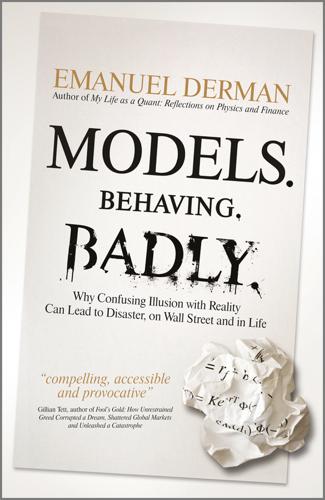
Models. Behaving. Badly.: Why Confusing Illusion With Reality Can Lead to Disaster, on Wall Street and in Life
by
Emanuel Derman
Published 13 Oct 2011
THE FINANCIAL MODELERS’ MANIFESTO AN ETHICAL COROLLARY MARKETS AND MORALS TAT TV AM ASI Appendix Acknowledgments Notes Index About the Author ALSO BY EMANUEL DERMAN My Life as a Quant: Reflections on Physics and Finance This edition first published in 2011 Copyright © 2011 by Emanuel Derman Registered office John Wiley & Sons Ltd, The Atrium, Southern Gate, Chichester, West Sussex, PO19 8SQ, United Kingdom For details of our global editorial offices, for customer services and for information about how to apply for permission to reuse the copyright material in this book please see our website at www.wiley.com. The right of Emanuel Derman to be identified as the author of this work has been asserted in accordance with the Copyright, Designs and Patents Act 1988.
…
University of California, Berkeley, Department of Statistics, Technical Report 611, January 2003. 8. In mathematics the symbol A (Delta) before any other symbol indicates an infinitesimally small change in the quantity represented by the second symbol. Thus At is an arbitrarily small increment in time. 9. See Emanuel Derman, “The Perception of Time, Risk and Return During Periods of Speculation,” Quantitative Finance 2, no. 4 (2002): 282–96. 10. “Exclusive” in describing an apartment means desirable and expensive because it excludes many people. In a financial crisis, though, exclusivity means illiquidity. What you want to own in a widespread financial crunch are inclusive securities. 11.
…
Thought: Extension and three meta-affects time Tomonaga, Shin’ichiro transparency: ethics of designing financial products and Treasury bills Treasury bonds Treynor, Jack Trumpeldor, Yosef truth uncertainty: EMM and financial models and physics and quantifiable risk and theory and unquantifiable of value unconscious underliers understanding: action and of adequate causes of body of experience intuition and of passions self- will and of world Universal Law of Gravitation (Newton) universe, laws of the University of Cape Town untouchables utility functions utility stocks value: benefits of financial models and Black-Scholes Model and definition of determination of EMM and estimates of financial markets and financial models and Law of One Price and mysteries of the world and determining price and purpose of finance models and ranking of securities by uncertainty of and universal value for risk and valuing of options vulgarity of financial models and vanilla options volatility: benefits of financial models and Black-Scholes Model and CAPM and EMM and financial models and futility of using financial models and purpose of finance models and risk and stochastic vulgarity of financial models and Volta, Alessandro voltaic pile W-bosons War of Independence, Israeli waves: electromagnetic theory and weather models Weinberg-Salam Model Weinberg, Steven Wells, Robin will Wilmott, Paul The Wind in the Willow (Grahame) wonder: Spinoza’s emotions theory and words: limitations of world: composition of as focus of physics intuition as way of understanding the invention/discovery as synthesis of mind and mysteries of World War II. See Second World War/ World War II worth: definition of Yahweh, Z-bosons Zionism Zippy model airplane About The Author Emanuel Derman is head of risk at Prisma Capital Partners and a professor at Columbia University, where he directs the program in financial engineering. He is the author of My Life as a Quant, one of Businessweek's top ten books of the year, in which he introduced the quant world to a wide audience. He was born in South Africa but has spent most of his professional life in New York City, where he has made contributions to several fields.
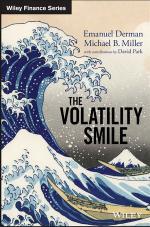
The Volatility Smile
by
Emanuel Derman,Michael B.Miller
Published 6 Sep 2016
With offices in North America, Europe, Australia, and Asia, Wiley is globally committed to developing and marketing print and electronic products and services for our customers’ professional and personal knowledge and understanding. The Volatility Smile EMANUEL DERMAN MICHAEL B. MILLER with contributions by David Park Cover image: Under the Wave off Kanagawa by Hokusai © Fine Art Premium / Corbis Images Cover design: Wiley Copyright © 2016 by Emanuel Derman and Michael B. Miller. All rights reserved. Published by John Wiley & Sons, Inc., Hoboken, New Jersey. Published simultaneously in Canada. No part of this publication may be reproduced, stored in a retrieval system, or transmitted in any form or by any means, electronic, mechanical, photocopying, recording, scanning, or otherwise, except as permitted under Section 107 or 108 of the 1976 United States Copyright Act, without either the prior written permission of the Publisher, or authorization through payment of the appropriate per-copy fee to the Copyright Clearance Center, Inc., 222 Rosewood Drive, Danvers, MA 01923, (978) 750-8400, fax (978) 646-8600, or on the Web at www.copyright.com.
…
If this book refers to media such as a CD or DVD that is not included in the version you purchased, you may download this material at http://booksupport.wiley.com. For more information about Wiley products, visit www.wiley.com. Library of Congress Cataloging-in-Publication Data: Names: Derman, Emanuel, author. | Miller, Michael B. (Michael Bernard), 1973- author. Title: The volatility smile / Emanuel Derman, Michael B. Miller. Description: Hoboken, New Jersey : Wiley, 2016. | Series: The Wiley finance series | Includes index. Identifiers: LCCN 2016012191 (print) | LCCN 2016019398 (ebook) | ISBN 9781118959169 (hardback) | ISBN 9781118959176 (pdf) | ISBN 9781118959183 (epub) Subjects: LCSH: Finance–Mathematical models. | Securities–Valuation. | BISAC: BUSINESS & ECONOMICS / Finance.
…
First we write ( − ln ST S0 ) ( = −ln S∗ S0 ) ( − ln ST S∗ ) (4.35) to include the strike break point S∗ . Then, substituting from Equation 4.16, we obtain ( −ln ST S0 ) ( = −ln S∗ S0 ) ∗ S S − S∗ 1 + P (K, T) dK − T ∗ ∫ S K2 0 (4.36) ∞ + 2 1 C(K, T) dK ∫S∗ K2 This section follows closely Kresimir Demeterfi, Emanuel Derman, Michael Kamal, and Joseph Zou, “A Guide to Volatility and Variance Swaps,” Journal of Derivatives 4 (1999): 9–32. 76 THE VOLATILITY SMILE Here P(K, T) and C(K, T) denote the values at expiration time T of puts and calls respectively with strike K, and (ST – S∗ )/S∗ is the payoff of 1/S∗ forward contracts on the stock with a delivery price of S∗ .
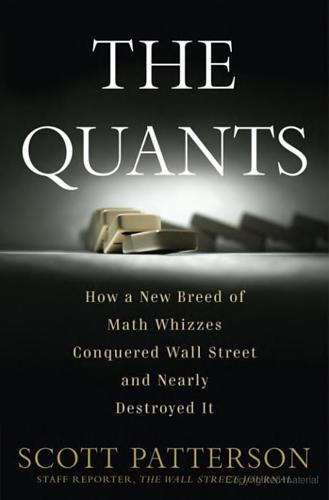
The Quants
by
Scott Patterson
Published 2 Feb 2010
The volatility smile perplexed Wall Street’s quants. For one thing, it made a hash of their carefully calibrated hedging strategies. It also raised questions about the underlying theory itself. “I realized that the existence of the smile was completely at odds with Black and Scholes’s 20-year-old foundation of options theory,” wrote Emanuel Derman, a longtime financial engineer who worked alongside Fischer Black at Goldman Sachs, in his book My Life as a Quant. “And, if the Black-Scholes formula was wrong, then so was the predicted sensitivity of an option’s price to movements in its underlying index. … The smile, therefore, poked a small hole deep into the dike of theory that sheltered options trading.”
…
The mad scientists who’d been running wild in the heart of the financial system for decades had finally done it: they’d blown it up. On a frigid day in early January 2009, several weeks after addressing the crowd of hopeful quants at the Renaissance Hotel, Wilmott boarded a plane at Heathrow Airport in London and returned to New York City. In New York, he met with über-quant Emanuel Derman. A lanky, white-haired South African, Derman headed up Columbia University’s financial engineering program. He was one of the original quants on Wall Street and had spent decades designing derivatives for Goldman Sachs, working alongside legends such as Fischer Black. Wilmott and Derman had become alarmed by the chaotic state of their profession and by the mind-boggling destruction it had helped bring about.
…
When German tanks rumbled into France: Some details of Mandelbrot’s life come from a series of interviews with Mandelbrot in the summer of 2008. Many also come from the book The (Mis)Behavior of Markets: A Fractal View of Financial Turbulence, by Benoit Mandelbrot and Richard L. Hudson (Basic Books, 2006). “I realized that the existence of the smile”: My Life as a Quant, by Emanuel Derman (John Wiley & Sons, 2004), 226. A squad of fifty armed federal marshals: Certain details come from Den of Thieves, by James Stewart (Simon & Schuster, 1991). He also worked as a consultant: I learned the fascinating story of Thorp’s discovery of the Madoff fraud in several interviews with Thorp in December 2008 as the fraud was discovered.

How I Became a Quant: Insights From 25 of Wall Street's Elite
by
Richard R. Lindsey
and
Barry Schachter
Published 30 Jun 2007
Consider this quotation from Time magazine of April 1994, cited by Peter Bernstein: “Prices of derivatives are not based on old-fashioned human hunches but on calculations designed and monitored by computer wizards using abstruse mathematical formulas . . . developed by so-called quants . . . ”2 Wizards, indeed. Even Emanuel Derman, one of the most famous of quants, feels compelled to assert that “[t]he Black-Scholes model tells us, almost miraculously, how to manufacture an option . . . ”3 (italics added). As the knowledge necessary to perform such feats is not a part of the regular secondary-school math curriculum, facility with derivatives requires a level of quantitative (hence “quant”) training and skill confined to the mathematical specialist.
…
In the paper in question, I showed that you could price options assuming the underlying stock followed a Poisson process. Later I showed with Michael Ong that this could be used to “correctly” price binary options using call spreads.16 JWPR007-Lindsey May 7, 2007 16:55 Neil Chriss 123 I wanted to get feedback on my paper and so I sent it around to various academics and also to Emanuel Derman, who was head of Goldman Sachs’ Quantitative Strategies Group, which was the leading group in derivatives pricing research at the time. Derman’s group was in charge of derivatives research and technology, and he was the most recognized figure in the industry at the time. One day, while sitting around IAS, Emanuel called me to tell me he had received my paper.
…
I taught a course of my own at Columbia in the mid 1980s and then started teaching as an adjunct at Yale. At Yale I had the pleasure over 15 years of coteaching with both my early mentor, Martin Shubik, and later my former Yale classmate but now well-known professor Will Goetzmann. In 2005, I returned to teach at Columbia at the encouragement of Emanuel Derman, along with Leon Metzger. In the early 1990s Jack Marshall and Bob Schwartz asked me to become involved in a professional society they were then organizing, the International Association of Financial Engineers. I was enthusiastic about being a part of that organization as I love everything about financial engineering.

Escape From Model Land: How Mathematical Models Can Lead Us Astray and What We Can Do About It
by
Erica Thompson
Published 6 Dec 2022
I think there is a risk that the tree may not survive a hard pruning, but there is equally a risk of collapse if we allow it to continue being so unbalanced. Longer-term pruning and focused care will be needed to encourage the other branches to blossom. 7 Masters of the Universe I will remember that I didn’t make the world, and it doesn’t satisfy my equations. Emanuel Derman and Peter Wilmott, ‘The Financial Modelers’ Manifesto’ (2009) The use of models in economics, like other modelling endeavours, stems from a wish to control uncertainty about the future. Yet we remain highly uncertain, perhaps more uncertain than ever, about the outcome of modelled economic variables like stock prices or insurance losses over decision-relevant timescales: say, the next ten or twenty years.
…
Where the modeller endows their model with their own values, priorities and blind spots, the model then reflects those values, priorities and blind spots back, both in terms of how the system works and in terms of the kinds of interventions one could make. Stiglitz noted exactly this, that ‘our models do affect how we think’. Paul Wilmott and Emanuel Derman included in their Modeller’s Hippocratic Oath the following: ‘I will remember that I didn’t make the world, and it doesn’t satisfy my equations.’ While taking into account known uncertainties (via models), we also need to structure our thinking so that it is not completely blindsided by unknown or unknowable uncertainties.
…
.: Why Confusing Illusion with Reality Can Lead to Disaster, on Wall Street and in Life, Free Press, 2012 Frydman, Roman, and Michael Goldberg, Beyond Mechanical Markets, Princeton University Press, 2011 Haldane, Andrew, ‘The Dog and the Frisbee’, speech at Jackson Hole, Wyoming, 31 August 2012 Lowenstein, Roger, When Genius Failed: The Rise and Fall of Long Term Capital Management, Fourth Estate, 2002 MacKenzie, Donald, An Engine, Not a Camera: How Financial Models Shape Markets, MIT Press (Inside Technology Series), 2008 March, James, Lee Sproull and Michal Tamuz, ‘Learning from Samples of One or Fewer’, Organization Science, 2(1), 1991 Rebonato, Riccardo, Volatility and Correlation, John Wiley, 1999 Stiglitz, Joseph, ‘Where Modern Macroeconomics Went Wrong’, Oxford Review of Economic Policy, 34, 2018 Taleb, Nassim, The Black Swan: The Impact of the Highly Improbable, Random House, 2007 Wilmott, Paul, and David Orrell, The Money Formula: Dodgy Finance, Pseudo Science, and How Mathematicians Took Over the Markets, Wiley, 2017 ——, and Emanuel Derman, ‘The Financial Modelers’ Manifesto’, https://wilmott.com/financialmodelers-manifesto/, 2009 Chapter 8: The Atmosphere is Complicated Allen, Myles, Mustafa Babiker, Yang Chen, et al., ‘IPCC SR15: Summary for Policymakers’, in IPCC Special Report: Global Warming of 1.5C, Intergovernmental Panel on Climate Change, 2018 Anderson, Kevin, ‘Duality in Climate Science’, Nature Geoscience, 8(12), 2015 Beck, Silke, and Martin Mahony, ‘The Politics of Anticipation: The IPCC and the Negative Emissions Technologies Experience’, Global Sustainability, 1, 2018 Burke, Marshall, Solomon Hsiang and Edward Miguel, ‘Global Non-Linear Effect of Temperature on Economic Production’, Nature, 527(7577), 2015 Edwards, Paul, A Vast Machine: Computer Models, Climate Data, and the Politics of Global Warming, MIT Press, 2010 Hänsel, Martin C., Moritz A.
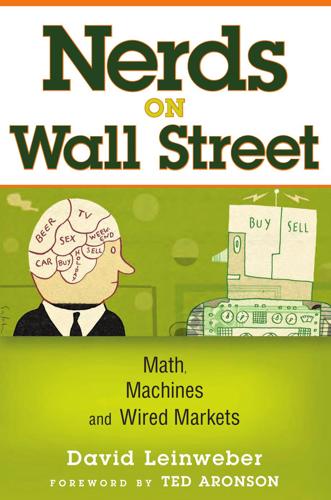
Nerds on Wall Street: Math, Machines and Wired Markets
by
David J. Leinweber
Published 31 Dec 2008
The other people writing for the book included some of the smartest kids on the block and some old friends, so I said yes on the spot. There are chapters by pillars of the quant world, authors of the standard texts, and writers of oft-cited papers. Others did interesting and rewarding things with technology and markets. Emanuel Derman, author of My Life as a Quant: Reflections on Physics and Finance ( John Wiley & Sons, 2004), made this point in the first line of his review for the Wall Street Journal: “By my reckoning, several of the 25 memoirists in How I Became a Quant are not true quants, and they are honest (or proud) enough to admit it.”2 xv xvi Introduction I am, no doubt, high on the list of poseurs, and I will be the first to admit it.
…
It has links in to all of these references, plus color and animated versions of the black & white screen grabs found in the book. The site will be updated often with new and topical items. Notes 1. A term of respect popularized by Michael Lewis in his 1989 book, Liar’s Poker (W.W. Norton). 2. Emanuel Derman, “Finance by the Numbers,” Wall Street Journal, August 22, 2007. 3. Much of Steven Levy’s 1984 book Hackers: Heroes of the Computer Revolution (Doubleday) takes place in the PDP-1 lab at MIT. Hacking had no criminal connotation at the time. The book is still in print. 4. Start with Herman Kahn’s On Thermonuclear War (Princeton, NJ: Princeton University Press, 1960) for a weighty tome, or “How RAND Invented the Postwar World,” by Virginia Campbell, in Invention & Technology magazine (Summer 2004) for a much more compact read. 5.
…
Steve Snider, who manages multibillion-dollar institutional portfolios at Fidelity, makes the point that “classical methods of data analysis assume that there is a stable process generating the data, so it is valid to attempt to deduce the underlying process from a selection of known observations. These new techniques don’t require that assumption, so they may be useful in especially noisy systems like stock forecasting.”5 That said, the dangers of rampant data mining using many of these approaches cannot be overemphasized (see Chapter 6, “Stupid Data Miner Tricks”). Emanuel Derman, former head of quantitative strategies at Goldman Sachs, described this over eagerness to blindly apply quantitative and computerized methods: The best quantitative finance brings real insight into the relation between value and uncertainty, and it approaches the quality of real science; the worst is a pseudoscientific hodgepodge of complex mathematics used with obscure justification.6 The Crackpot as Billionaire Not everyone who decides to burn CPU cycles on Wall Street ends up writing about lessons learned.
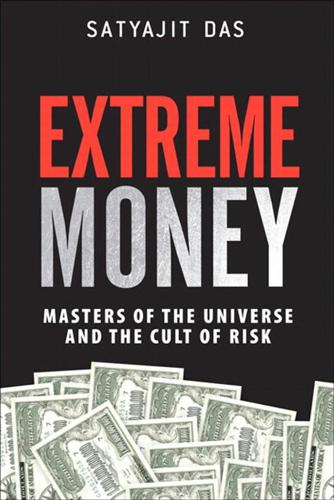
Extreme Money: Masters of the Universe and the Cult of Risk
by
Satyajit Das
Published 14 Oct 2011
Sylvain Raines, an experienced quant, joked that quantitative finance was an oxymoron as “finance is quantitative by definition...this is like saying aerial flight or wet swimming.”11 Newly graduated financial experts applied simple “phenomenological toys” to markets. Most financial models are wrong, only the degree of error is in question. Differential equations, positive definite matrices or the desirable statistical properties of an estimator rarely determine the price of traded financial instruments. Goldman Sachs’ Emanuel Derman, a trained physicist, identified the difference: “In physics, a model is correct if it predicts the future trajectories of planets or the existence and properties of new planets.... In finance, you cannot easily prove a model right by such observations.” Derman ruefully concluded: “Trained economists have never seen a really first-class model.”12 Commenting on the required level of quantitative knowledge of people involved in financial markets, Derman once observed that Tour de France bicyclists did not need to know the laws of physics.
…
Ian Kerr referred to them as Chernobyl decay obligations (www.efinancialnews.com/homepage/content/2448260317). Chapter 13—Risk Supermarkets 1. Peter L. Bernstein (1996) Against The Gods: The Remarkable Story of Risk, John Wiley, New York: 1. 2. Jorge Luis Borges (1999) Collected Fiction, Penguin Books, New York: 105. 3. Emanuel Derman (2004) My Life As A Quant: Reflection on Physics and Finance, John Wiley, New Jersey. 4. Berkshire Hathaway Letter to Shareholders (2002). 5. Martin Z. Braun, Darrell Preston and Liz Willen “The banks that fleeced Alabama” (September 2005) Bloomberg Markets; William Selway and Martin Z. Braun “The fleecing of Alabama: the bills come due” (July 2008) Bloomberg Markets. 6.
…
Rahul Bajaj “The privilege of living in extraordinary times” (26 January 2009) Financial Times. 10. Stephen Crittenden “Background briefing, mostly bloody awful” (29 March 2009), ABC Radio, Australia. 11. Sylvain Raynes “The state of financial engineering” (3 December 2008) (www.quantnet.com/forum/showthread.php?t=3978). 12. Emanuel Derman (2004) My Life as a Quant: Reflections on Physics and Finance, John Wiley, New Jersey: 266, 267. 13. “Prophet of climate doom a scientific black sheep” (17 September 2009), AFP (www.terradaily.com/reports/Prophet_of_climate_doom_a_scientific_black_sheep_999.html). 14. Lewis Carroll (1960) The Annotated Alice: Alice’s Adventures in Wonderland, Penguin Books, London: 129. 15.
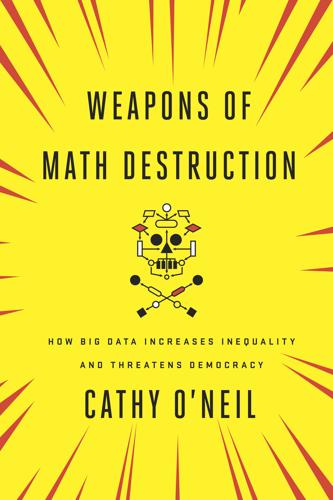
Weapons of Math Destruction: How Big Data Increases Inequality and Threatens Democracy
by
Cathy O'Neil
Published 5 Sep 2016
How do we start to regulate the mathematical models that run more and more of our lives? I would suggest that the process begin with the modelers themselves. Like doctors, data scientists should pledge a Hippocratic Oath, one that focuses on the possible misuses and misinterpretations of their models. Following the market crash of 2008, two financial engineers, Emanuel Derman and Paul Wilmott, drew up such an oath. It reads: ~ I will remember that I didn’t make the world, and it doesn’t satisfy my equations. ~ Though I will use models boldly to estimate value, I will not be overly impressed by mathematics. ~ I will never sacrifice reality for elegance without explaining why I have done so
…
Apple, the most valuable company: Verne Kopytoff, “Apple: The First $700 Billion Company,” Fortune, February 10, 2015, http://fortune.com/2015/02/10/apple-the-first-700-billion-company/. In 1907 alone, 3,242 miners died: MSHA, “Coal Fatalities for 1900 Through 2014,” US Department of Labor, accessed January 9, 2016, www.msha.gov/stats/centurystats/coalstats.asp. drew up such an oath: Emanuel Derman and Paul Wilmott, “The Financial Modeler’s Manifesto,” January 7, 2009, www.uio.no/studier/emner/sv/oekonomi/ECON4135/h09/undervisningsmateriale/FinancialModelersManifesto.pdf. FindFamilyResources: FindFamilyResources website, accessed January 9, 2016, http://findfamilyresources.com/.

Makers and Takers: The Rise of Finance and the Fall of American Business
by
Rana Foroohar
Published 16 May 2016
Markowitz’s quantitative finance methodology won him the Nobel Prize and became the basis of the first computerized arbitrage-trading program, which would eventually take over the markets. Today 70–80 percent of all trading is done by computers, much of it using flash programs designed to trade on fractional price changes over split-second time intervals, reducing the average holding period of a stock from about eight years in the 1960s to just four months by 2012.55 Emanuel Derman, a quantitative mathematician and physicist who pioneered some of those trading models at Goldman and now teaches financial engineering at Columbia, believes that the focus on mathematical economics in both finance and business education has gone way too far. Indeed, in 2012, he published a mea culpa for his own work in the twentieth-anniversary issue of the Journal of Derivatives.
…
I must also thank the many other important people who gave their valuable time to sit for interviews and share their thoughts—among them are Senator Elizabeth Warren, Senator Sherrod Brown, Gary Gensler, Damon Silvers, Warren Buffett, Jack Bogle, Andy Haldane, Lord Adair Turner, Richard Trumka, William Lazonick, Mike Konczal, Nell Abernathy, Felicia Wong, Anat Admati, Gerald Davis, Stephen Cecchetti, James Galbraith, Edmund Phelps, Wallace Turbeville, Thomas Hoenig, Charles Morris, Joe Nocera, Charles Ferguson, Bob Lutz, Lisa Donner, Rebecca Henderson, Margaret Heffernan, Andrew Lo, Dominic Barton, Nitin Nohria, Rakesh Khurana, Emanuel Derman, Mark Bertolini, Andrew Smithers, Lynn Stout, Sam Palmisano, Greg Smith, Joseph Blasi, David Rothkopf, Ken Miller, Marc Fasteau, Robert R. Locke, Ruchir Sharma, Gautam Mukunda, Saule Omarova, Eileen Appelbaum, and Sherle Schwenninger. Thanks also to the many academics and policy thinkers whose research I relied heavily on, including but not limited to: Greta Krippner, Moritz Schularick, Alan M.
…
Glenn Hubbard, November 2004. 54. Khurana, From Higher Aims to Hired Hands, 346. 55. Jesse Eisinger, “Challenging the Long-Held Belief in ‘Shareholder Value,’ ” New York Times, June 27, 2012. Also see LPL Financial Research, “Weekly Market Commentary,” by Jeffrey Kleintop, CFA, August 6, 2012. 56. Emanuel Derman, “Apologia Pro Vita Sua,” Journal of Derivatives 20, no. 1 (2012). 57. Author interview with Nitin Nohria, dean of Harvard Business School, for this book. 58. “MIT Facts 2016: MIT Students After Graduation,” Massachusetts Institute of Technology, online at http://web.mit.edu/facts/alum.html. 59.

The Success Equation: Untangling Skill and Luck in Business, Sports, and Investing
by
Michael J. Mauboussin
Published 14 Jul 2012
Nassim Nicholas Taleb and Mark Blyth, “The Black Swan of Cairo: How Suppressing Volatility Makes the World Less Predictable and More Dangerous,” Foreign Affairs 90, no. 3 (May/June 2011): 33–39; Emanuel Derman distinguishes between models and theories, “Models are analogies; they always describe one thing relative to something else. Models need a defense or explanation. Theories, in contrast, are the real thing. They need confirmation rather than explanation. A theory describes an essence. A successful theory can become a fact.” From Emanuel Derman, Models. Behaving. Badly: Why Confusing Illusion with Reality Can Lead to Disaster, on Wall Street and in Life (New York: Free Press, 2011), 59. 24.

Shocks, Crises, and False Alarms: How to Assess True Macroeconomic Risk
by
Philipp Carlsson-Szlezak
and
Paul Swartz
Published 8 Jul 2024
“In physics, it takes three laws to explain 99% of the data; in finance, it takes more than 99 laws to explain about 3%,” said MIT economist Andrew Lo, quoted in Emanuel Derman, “Beware of Economists Bearing Greek Symbols,” Harvard Business Review, October 2005, https://hbr.org/2005/10/beware-of-economists-bearing-greek-symbols. “In physics you’re playing against God, and He doesn’t change His laws very often. In finance you’re playing against God’s creatures, agents who value assets based on their ephemeral opinions.” Emanuel Derman, Models. Behaving. Badly.: Why Confusing Illusion with Reality Can Lead to Disaster, on Wall Street and in Life (New York: Free Press, 2011).
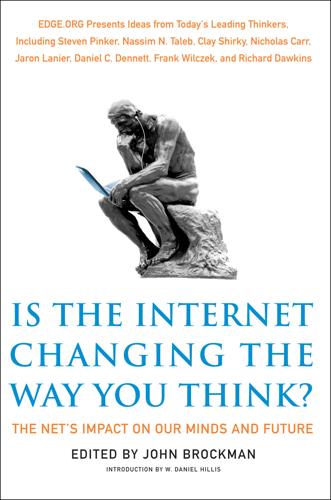
Is the Internet Changing the Way You Think?: The Net's Impact on Our Minds and Future
by
John Brockman
Published 18 Jan 2011
Bass “If You Have Cancer, Don’t Go on the Internet”: Karl Sabbagh Incomprehensible Visitors from the Technological Future: Alison Gopnik “Go Native”: Howard Gardner The Maximization of Neoteny: Jaron Lanier Wisdom of the Crowd: Keith Devlin Weirdness of the Crowd: Robert Sapolsky The Synchronization of Minds: Jamshed Bharucha My Judgment Enhancer: Geoffrey Miller Speed Plus Mobs: Alan Alda Repetition, Availability, and Truth: Daniel Haun The Armed Truce: Irene M. Pepperberg More Efficient, but to What End?: Emanuel Derman I Have Outsourced My Memory: Charles Seife The New Balance: More Processing, Less Memorization: Fiery Cushman The Enemy of Insight?: Anthony Aguirre The Joy of Just-Enoughness: Judith Rich Harris The Rise of Internet Prosthetic Brains and Soliton Personhood: Clifford Pickover Immortality: Juan Enriquez A Third Replicator: Susan Blackmore Bells and Smoke: Christine Finn Dare, Care, and Share: Tor Nørretranders Getting Close: Stuart Pimm A Miracle and a Curse: Ed Regis “The Plural of Anecdote Is Not Data”: Lisa Randall Collective Action and the Global Commons: Giulio Boccaletti Informed, Tightfisted, and Synthetic: Laurence C.
…
Which brings me to the armed truce—an attempt to appreciate the positives and accept the negatives, to set personal boundaries and refuse to let them be breached. Of course, maybe it is just this dogmatic approach that prevents the Internet from changing the way I think. More Efficient, but to What End? Emanuel Derman Professor of financial engineering, Columbia University; principal, Prisma Capital Partners; former head, Quantitative Strategies Group, Equities Division, Goldman Sachs and Co.; author, My Life as a Quant: Reflections on Physics and Finance An engineer, a physicist, and a computer scientist go for a drive.
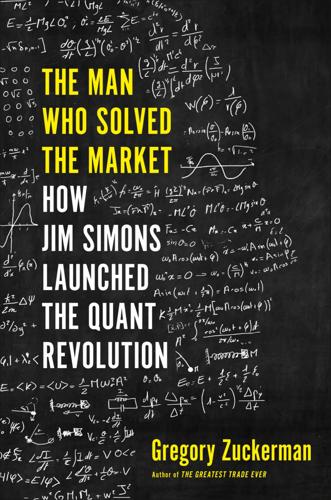
The Man Who Solved the Market: How Jim Simons Launched the Quant Revolution
by
Gregory Zuckerman
Published 5 Nov 2019
They usually were tasked with building models to place values on complicated derivatives and mortgage products, analyze risk, and hedge, or protect, investment positions, activities that became known as forms of financial engineering. It took a little while for the finance industry to come up with a nickname for those designing and implementing these mathematical models. At first, they were called rocket scientists by those who assumed rocketry was the most advanced branch of science, says Emanuel Derman, who received a PhD in theoretical physics at Columbia University before joining a Wall Street firm. Over time, these specialists became known as quants, short for specialists in quantitative finance. For years, Derman recalls, senior managers at banks and investment firms, many of whom prided themselves on maintaining an ignorance of computers, employed the term as a pejorative.
…
Lo and Jasmina Hasanhodzic, The Evolution of Technical Analysis: Financial Prediction from Babylonian Tablets to Bloomberg Terminals (Hoboken, NJ: John Wiley & Sons, 2010). 5. Douglas Bauer, “Prince of the Pit,” New York Times, April 25, 1976, https://www.nytimes.com/1976/04/25/archives/prince-of-the-pit-richard-dennis-knows-how-to-keep-his-head-at-the.html. 6. Emanuel Derman, My Life as a Quant: Reflections on Physics and Finance (Hoboken, NJ: John Wiley & Sons, 2004). 7. Edward O. Thorp, A Man for All Markets: From Las Vegas to Wall Street, How I Beat the Dealer and the Market (New York: Random House, 2017). 8. Scott Patterson, The Quants: How a New Breed of Math Whizzes Conquered Wall Street and Nearly Destroyed It (New York: Crown Business, 2010). 9.

What to Think About Machines That Think: Today's Leading Thinkers on the Age of Machine Intelligence
by
John Brockman
Published 5 Oct 2015
CARR The Control Crisis JON KLEINBERG & SENDHIL MULLAINATHAN We Built Them, but We Don’t Understand Them JAAN TALLINN We Need to Do Our Homework GEORGE CHURCH What Do You Care What Other Machines Think? ARNOLD TREHUB Machines Cannot Think ROY BAUMEISTER No “I” and No Capacity for Malice KEITH DEVLIN Leveraging Human Intelligence EMANUEL DERMAN A Machine Is a “Matter” Thing FREEMAN DYSON I Could Be Wrong DAVID GELERNTER Why Can’t “Being” or “Happiness” Be Computed? LEO M. CHALUPA No Machine Thinks About the Eternal Questions DANIEL C. DENNETT The Singularity—an Urban Legend? W. TECUMSEH FITCH Nano-Intentionality IRENE PEPPERBERG A Beautiful (Visionary) Mind NICHOLAS HUMPHREY The Colossus Is a BFG ROLF DOBELLI Self-Aware AI?
…
To guard against those dangers, it helps to be aware that we’re genetically programmed to act in trustful, intelligent-agency-ascribing ways in certain kinds of interactions, be they with people or machines. But sometimes a device that waddles and quacks is just a device. It ain’t no duck. A MACHINE IS A “MATTER” THING EMANUEL DERMAN Professor of financial engineering, Columbia University; senior adviser, KKR Prisma; author, Models.Behaving.Badly and My Life As a Quant A machine is a small part of the physical universe that has been arranged, after some thought by humans or animals, in such a way that when certain initial conditions are set up (by humans or animals) the deterministic laws of nature see to it that that small part of the physical universe automatically evolves in a way that humans or animals think is useful.
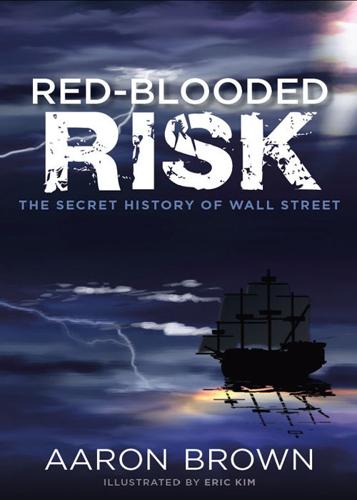
Red-Blooded Risk: The Secret History of Wall Street
by
Aaron Brown
and
Eric Kim
Published 10 Oct 2011
So I acknowledge here my debt to the dozens of people who provided slices of various characters’ history and attitudes. Many people read part or all of the manuscript and sent useful comments. Brandon Adams, Gustavo Bamberger, Bill Benter, John Bogle, Rick Bookstaber, Reuven Brenner, Eugene Christiansen, Emanuel Derman, Art Duquette, Dylan Evans, Doyne Farmer, Justin Fox, Kenneth French, Lisa Goldberg, James Grosjean, Ian Hacking, Michael Heneberry, Carey Hobbs, Craig Howe, James McManus, Michael Maubossin, Nick Maughan, Perry Mehrling, Robert Merton, Joe Nocera, John O’Brien, Deborah Pastor, Scott Patterson, William Poundstone, Kevin Rosema, Myron Scholes, James Stoner, Nassim Taleb, Edward Thorp, Whitney Tilson, James Ward, Paul Wilmott, and Bruce Zastera were particularly helpful.
…
If you like to study your quantitative finance through people, Espen Haug’s Derivatives Models on Models is an excellent choice. Also consider The Quants: How a New Breed of Math Whizzes Conquered Wall Street and Nearly Destroyed It by Scott Patterson, My Life as a Quant: Reflections on Physics and Finance by Emanuel Derman, Inside the House of Money: Top Hedge Fund Traders on Profiting in the Global Markets by Steven Drobny, and More Money Than God: Hedge Funds and the Making of a New Elite by Sebastian Mallaby. The Economic Function of Futures Markets by Jeffrey Williams remains after 20 years the only really good account of this subject.
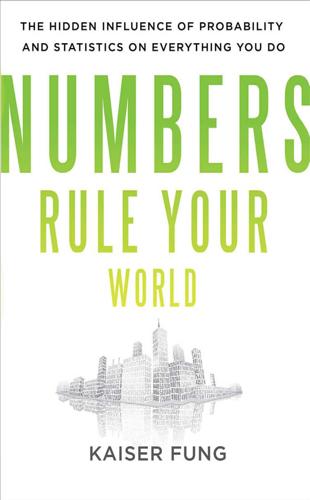
Numbers Rule Your World: The Hidden Influence of Probability and Statistics on Everything You Do
by
Kaiser Fung
Published 25 Jan 2010
Freakonomics is a notable exception, covering the applied research of the economics professor Steven Levitt. Two books in the finance area also fit the bill: in The Black Swan, Nassim Taleb harangues theoreticians of financial mathematics (and other related fields) on their failure in statistical thinking, while in My Life as a Quant, Emanuel Derman offers many valuable lessons for financial engineers, the most important of which is that modelers in the social sciences—unlike physicists—should not seek the truth. Daniel Kahneman summarized his Nobel-prize-winning research on the psychology of judgment, including the distinction between intuition and reasoning, in “Maps of Bounded Rationality: Psychology for Behavioral Economics,” published in American Economic Review.
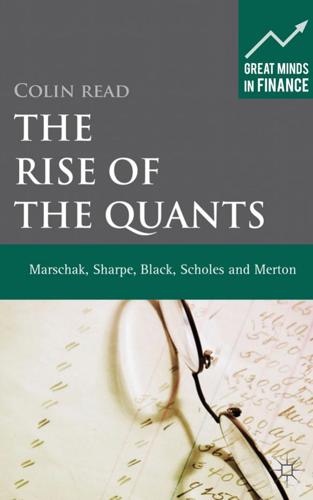
The Rise of the Quants: Marschak, Sharpe, Black, Scholes and Merton
by
Colin Read
Published 16 Jul 2012
While he had demonstrated that an options price depends on the underlying stock price mean and volatility, and the risk-free interest rate, the overall market for interest rates is much more multi-dimensional. The interest rate yield curve, which graphs rates against maturities, depends on many markets and instruments, each of which is subject to stochastic processes. His interest and collaboration with Emanuel Derman and Bill Toy resulted in a model of interest rates that was first used profitably by Goldman Sachs through the 1980s, but eventually entered the public domain when they published their work in the Financial Analysts Journal in 1990.2 Their model provided reasonable estimates for both the prices and volatilities of treasury bonds, and is still used today.
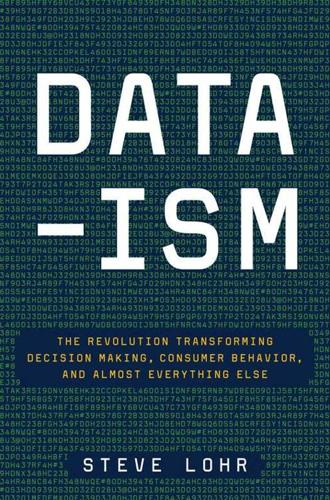
Data-Ism: The Revolution Transforming Decision Making, Consumer Behavior, and Almost Everything Else
by
Steve Lohr
Published 10 Mar 2015
That is not necessarily a confidence-inspiring statement, given the lessons of the 2008 financial crisis. Quants didn’t cause the crisis, but they played their part. Their risk models proved myopic because they were too simple-minded, unable to take account of the rich, chaotic tapestry of behavior, especially in times of stress. Emanuel Derman, a physicist and former quant at Goldman Sachs, explained the perils of math models in finance, in his 2011 book, Models Behaving Badly. After coming to Wall Street in 1985, Derman soon came to believe that physics models could be successfully applied to finance and economics—a belief he later abandoned.

Swimming With Sharks: My Journey into the World of the Bankers
by
Joris Luyendijk
Published 14 Sep 2015
A number of interviewees were struggling with this very question on a daily basis, and our conversations inevitably turned to complexity, and to the profound changes brought to the world of finance over the past decades by ‘quants’. In the middle office, quants build or manage the models their bank uses to calculate and possibly neutralise (‘hedge’) its risks. Drawn from academic backgrounds in maths, physics, chemistry and biology, these wizards invented the products that played a key role in the crash. Renowned quant Emanuel Derman typifies this new breed. After a few years as a physicist in academia and AT&T Bell Laboratories, Derman went to work for Goldman Sachs in 1985. In his bestselling autobiography My Life As a Quant he writes: ‘In physics you’re playing against God. In finance, you’re playing against God’s creatures.’
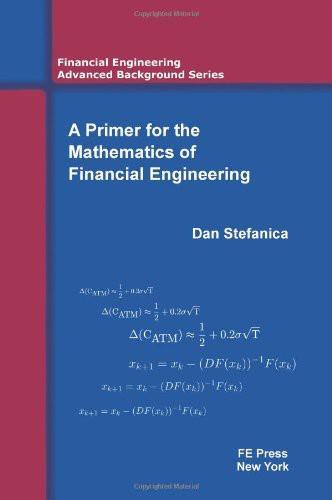
A Primer for the Mathematics of Financial Engineering
by
Dan Stefanica
Published 4 Apr 2008
I learned a lot from working alongside my colleagues in the mathematics department and from many conversations with practitioners from the financial industry.. Special thanks are due to Elena Kosygina and Sherman Wong, as well as to my good friends Peter Carr and Salih Neftci. The title of the book was suggested by Emanuel Derman, and is more euphonious than any previously considered alternatives. Many students have looked over ever-changing versions of the book, and their help and encouragement were greatly appreciated. The knowledgeable comments and suggestions of Robert Spruill are reflected in the final version of the book, as are exercises suggested by Sudhanshu Pardasani.
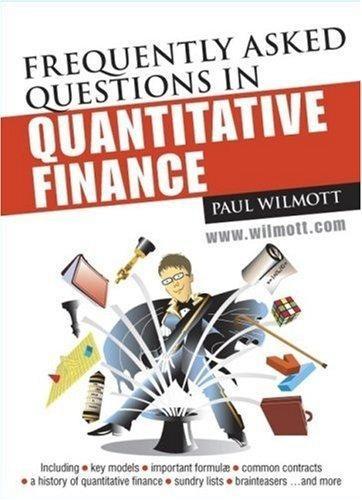
Frequently Asked Questions in Quantitative Finance
by
Paul Wilmott
Published 3 Jan 2007
The resulting volatility structure never matches actual volatility, and even if exotics are priced consistently it is not clear how to best hedge exotics with vanillas so as to minimize any model error. Such concerns seem to carry little weight, since the method is so ubiquitous. As so often happens in finance, once a technique becomes popular it is hard to go against the majority. There is job safety in numbers. See Emanuel Derman and Iraj Kani (1994), Bruno Dupire (1994) and Mark Rubinstein (1994). 1996 Avellaneda and Parás Marco Avellaneda and Antonio Parás were, together with Arnon Levy and Terry Lyons, the creators of the uncertain volatility model for option pricing. It was a great breakthrough for the rigorous, scientific side of finance theory, but the best was yet to come.

The Age of Stagnation: Why Perpetual Growth Is Unattainable and the Global Economy Is in Peril
by
Satyajit Das
Published 9 Feb 2016
Reduced funding for military research, the cancellation of the Superconducting Super Collider project, and the scaling down of Bell Laboratories meant that a large number of scientists, some from Eastern Europe and China, drifted into finance. These POWs—physicists on Wall Street, a term coined by Goldman Sachs's Emanuel Derman—helped drive the trading of complex instruments, which were now an established part of the finance economy. These events and their influences were central to the continuation of postwar expansion. The period commencing in the 1990s became known as the Great Moderation, an era of strong economic growth, high production and employment, low inflation, reduced volatility in the business cycle, and self-adulation among politicians, central bankers, and academic economists.
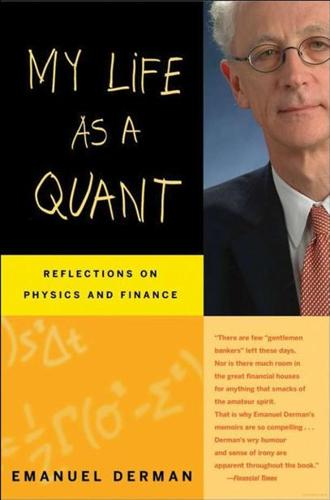
My Life as a Quant: Reflections on Physics and Finance
by
Emanuel Derman
Published 1 Jan 2004
Written by perhaps the leading practitioner of his generation, this insightful narrative explores the disparate cultures of physics, finance, and their powerful fusion known as phynance. This book is a mustread for aspiring quants, financial historians, and armchair sociologists interested in the machinations of both academia and industry." -Peter Carr, Head of Quantitative Research, Bloomberg, and Director, Masters in Math Finance, NYU Emanuel Derman To the Memory of My Parents Ambition is a state of permanent dissatisfaction with the present. PROLOGUE THE TWO CULTURES 1 Physics and finance ■ What quants do ■ The Black-Scholes model ■ Quants and traders Pure thought and beautiful mathematics can divine the laws of physics ■ Can they do the same for finance?

This Will Make You Smarter: 150 New Scientific Concepts to Improve Your Thinking
by
John Brockman
Published 14 Feb 2012
Clifford Pickover The Kaleidoscopic Discovery Engine We are reluctant to believe that great discoveries are part of a discovery kaleidoscope and are mirrored in numerous individuals at once. Rebecca Newberger Goldstein Inference to the Best Explanation Not all explanations are created equal. Emanuel Derman Pragmamorphism Being pragmamorphic sounds equivalent to taking a scientific attitude toward the world, but it easily evolves into dull scientism. Nicholas Carr Cognitive Load When our cognitive load exceeds the capacity of our working memory, our intellectual abilities take a hit.

Doing Data Science: Straight Talk From the Frontline
by
Cathy O'Neil
and
Rachel Schutt
Published 8 Oct 2013
The next logical concept then is: models and algorithms are not only capable of predicting the future, but also of causing the future. That’s what we can look forward to, in the best of cases, and what we should fear in the worst. As an introduction to how to approach these issues ethically, let’s start with Emanuel Derman’s Hippocratic Oath of Modeling, which was made for financial modeling but fits perfectly into this framework: I will remember that I didn’t make the world and that it doesn’t satisfy my equations. Though I will use models boldly to estimate value, I will not be overly impressed by mathematics.
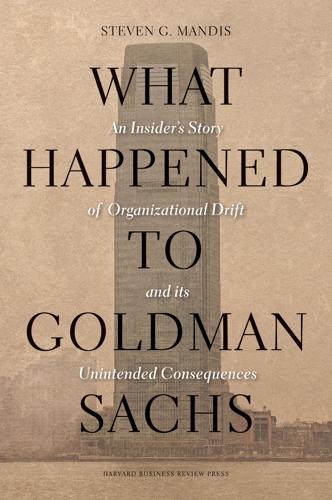
What Happened to Goldman Sachs: An Insider's Story of Organizational Drift and Its Unintended Consequences
by
Steven G. Mandis
Published 9 Sep 2013
Interviews confirmed the level of dissonance at Goldman, even as a publicly traded firm, in discussing and understanding that the output of the models was and is unique to Goldman, which meant the firm was not as dependent on the models as were other firms, and that, combined with what sociologists call a “heterarchical structure” (less hierarchy in the chain of command than in many firms) and the trading experience of its top executives, gave Goldman an edge.8 The more intense scrutiny of the models and risk factors led Goldman’s top executives to pick up on market signals that other firms’ executives missed.9 As Emanuel Derman, the former head of the quantitative risk strategies group at Goldman and now a professor at Columbia, wrote, at Goldman, “Even if you insist on representing risk with a single number, VaR isn’t the best one … As a result, though we [Goldman] used VaR, we didn’t make it our religion.”10 (Meanwhile, at other firms, measures like “VaR [value at risk] … became institutionalized,” as the New York Times’ Joe Nocera put it.
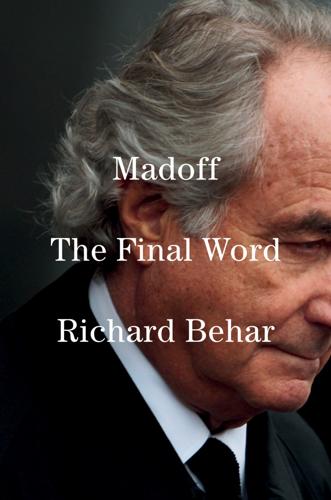
Madoff: The Final Word
by
Richard Behar
Published 9 Jul 2024
The list is long of those who provided anything from valuable expertise and history, to inspiration and encouragement, to the deconstruction of legal documents—or even the passing along of a key source or two: Tom Ajamie; Stanley Arkin; Judi Asch; Ernie Badway; Arlene Behar-Montefiore; Preet Bharara; Javier Bleichmar; Chris Bowers; Richard Breeden; Eric Breslin; David Brodsky; “The Brothers” (Ernie Corrigan, Russel Pergament, Mike Zonghetti); Bill Callahan; Dan Castleman; Lizzie Cohen; Marcia Cohn; Katie Coleman; Mark Coleman; Paulette Cooper; Jodi Crupi; Marla Daniels, Scott Daniels; Suzanne Dawson; Joe DeMarco; Emanuel Derman; Eric Dezenhall; Bruce Dubinsky; Lita Epstein; Julia Fenwick; Gene Foreman; Cecile Fradkin; Robert Friedman; Michael Gandin; Jim Gialamas; Eddie Goldstein; Thelma Goldstein; Jonathan Greenberg; Howard Greenwald; Sandy Scherzer Gross; Jim Heinzman; Dave Herron, JCCA; Hal Kahn; Dennis Kelleher; Ilene Kent; John Kim; Scott Kimmel; Gretchen King; Andrew Klein; Jessica Klein, David Kohane; Sonja Kohn; Bill Kreisberg; Ken Krys; Rabbi Dov Lerea; Rabbi Aaron Levine; Mark Litt; Donna MacKay; Bob Manchak; Jim Margolin; Valery Marchive; Better Markets; Carol (Solomon) Marston; Tom Martello; Doug Maynard; Bill McCausland; Brigid McMenamin; Dan Nardello; Nick Niehoff; Dr.
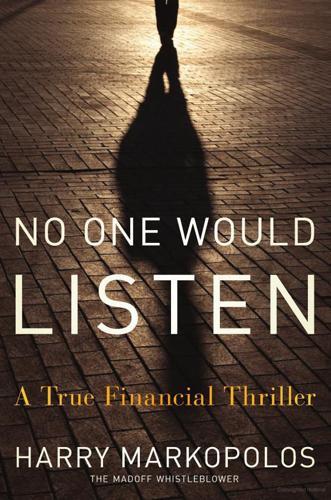
No One Would Listen: A True Financial Thriller
by
Harry Markopolos
Published 1 Mar 2010
To Leon Gross, thanks for your expert analysis; I wish the SEC had bothered to call you—things might have been different if they had. All of you were helpful at various points during my team’s investigation, proving that plenty of honest people work on Wall Street. I would like to thank the following people at Goldman Sachs for teaching me all about derivatives math: Dr. Joanne Hill, Dr. Emanuel Derman, Rebecca Cheong, Michael Liou, Jack Lehman, Mark Zurack, and Amy Goodfriend. To the late John “Front Page” Wilke of the Wall Street Journal for your courage and inspiration on all those corruption cases you broke. Real investigative journalists are a rare breed, but you were one of the best.
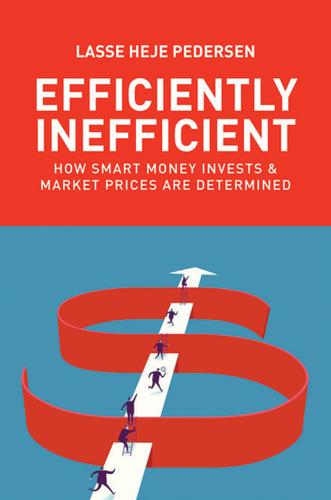
Efficiently Inefficient: How Smart Money Invests and Market Prices Are Determined
by
Lasse Heje Pedersen
Published 12 Apr 2015
For instance, we consider a stock’s price-to-earnings ratio, not its enterprise value-to-earnings ratio because the latter would look bad for a leveraged firm just because the interest payments reduce the earnings. Hence, with enterprise value in the numerator, the denominator should have earnings before interest expenses. ___________________ 1 Quantitative traders are close cousins to, but perform different roles than, the “sell-side quants” described in Emanuel Derman’s interesting autobiography My Life as a Quant (2004). Sell-side quants provide analytical tools that are helpful for hedging, risk management, discretionary traders, clients, and other purposes. In contrast, quantitative traders work on the “buy-side” and build models that are used directly as a tool for systematic trading. 2 See Damodaran (2012) for an extensive description of equity valuation and financial statement analysis. 3 To see this result, first note that Then change index on the first book value and make the appropriate adjustments to arrive at which gives the residual income model.
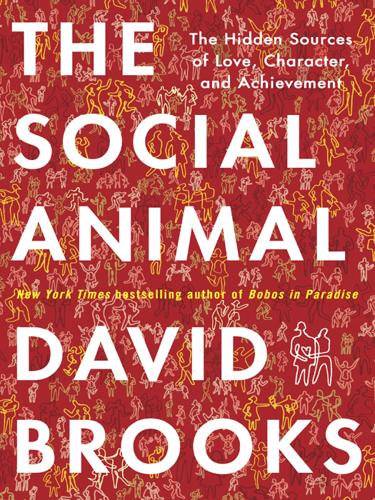
The Social Animal: The Hidden Sources of Love, Character, and Achievement
by
David Brooks
Published 8 Mar 2011
The influential economist Irving Fisher wrote his doctoral dissertation under the supervision of a physicist, and later helped build a machine with levers and pumps to illustrate how an economy works. Paul Samuelson applied the mathematical principles of thermodynamics to economics. On the finance side, Emanuel Derman was a physicist who became a financier and played a central role in developing the models for derivatives. While valuable tools for understanding economic behavior, mathematical models were also like lenses that filtered out certain aspects of human nature. They depended on the notion that people are basically regular and predictable.
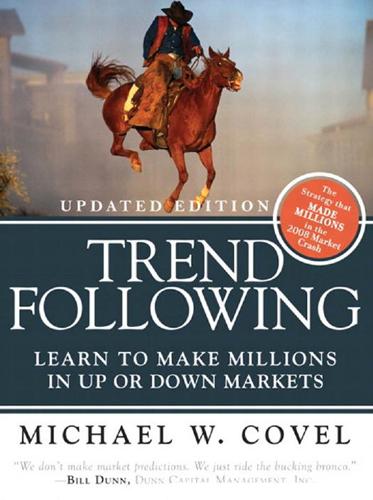
Trend Following: How Great Traders Make Millions in Up or Down Markets
by
Michael W. Covel
Published 19 Mar 2007
Barclay Managed Futures Report, Vol. 2, No. 3 (2000). 73. Sir Arthur Conan Doyle, The Sign of Four. London and New York: Pitman and Sons, 1890. 74. Christopher L. Culp, Media Nomics (April 1995), 4. 75. The Coming Storm, The Economist (February 17, 2004), see www.economist.com/buttonwood. 76. Emanuel Derman, The Journal of Derivatives (Winter, 2000), 64. 77. Frederic Townsend, Futures (December 2000), 75. 78. Another Two Bites the Dust. Derivative Strategies (May 16, 1994), 7. Chapter 5 1. Michael J. Mauboussin and Kristen Bartholdson, The Babe Ruth Effect: Frequency versus Magnitude The Consilient Observer.

Chaos Monkeys: Obscene Fortune and Random Failure in Silicon Valley
by
Antonio Garcia Martinez
Published 27 Jun 2016
These are the financial engineers who recycle the mathematics of fluid mechanics or probability for the world of filthy lucre. They absolutely litter Wall Street now, and some areas of finance, like the hyperfast world of high-frequency trading, couldn’t exist without them. The most authentic view of their world was penned by a founder of the Goldman Strategies team, Emanuel Derman, in his classic My Life as a Quant. † For fans of schadenfreude, life is a never-ending feast. When the Madoff scandal, the largest Ponzi scheme in American history, erupted in late 2008, it would turn out that the Elie Wiesel Foundation for Humanity had invested all of its assets with Madoff.

Antifragile: Things That Gain From Disorder
by
Nassim Nicholas Taleb
Published 27 Nov 2012
Generous comments and help: Peter Nielsen, Rory Sutherland, Saifedean Ammous, Max Brockman, John Brockman, Marcos Carreira, Nathan Myhrvold, Aaron Brown, Terry Burnham, Peter Boettke, Russ Roberts, Kevin Horgan, Farid Karkaby, Michael Schrague, Dan Goldstein, Marie-Christine Riachi, Ed Frankel, Mika Kasuga, Eric Weinstein, Emanuel Derman, Alberto Mingardi, Constantine Sandis, Guy Deutscher, Bruno Dupire, George Martin, Joelle Weiss, Rohan Silva, Janan Ganesh, Dan Ariely, Gur Huberman, Cameron Williams, Jacques Merab, Lorenzo Savorelli, Andres Velasco, Eleni Panagiotarakou, Conrad Young, Melik Keylan, Seth Roberts, John McDonald, Yaneer Bar-Yam, David Shaywitz, Nouriel Roubini, Philippe Asseily, Ghassan Bejjani, Alexis Grégoire Saint-Marie, Charles Tapiero, Barry Blecherman, Art De Vany, Guy Riviere, Bernard Oppetit, Brendon Yarkin, and Mark Spitznagel; and my online helpers Jean-Louis Reault, Ben Lambert, Marko Costa, Satiyaki Den, Kenneth Lamont, Vergil Den, Karen Brennan, Ban Kanj, Lea McKay, Ricardo Medina, Marco Alves, Pierre Madani, Greg Linster, Oliver Mayor, Satyaki Roy, Daniel Hogendoorn, Phillip Crenshaw, Walter Marsh, John Aziz, Graeme Blake, Greg Linster, Sujit Kapadia, Alvaro De La Paz, Apoorv Bajpai, Louis Shickle, Ben Brady, Alfonso Payno de las Cuevas, “Guru Anaerobic,” Alexander Boland, David Boxenhorn, Dru Stevenson, and Michal Kolano.
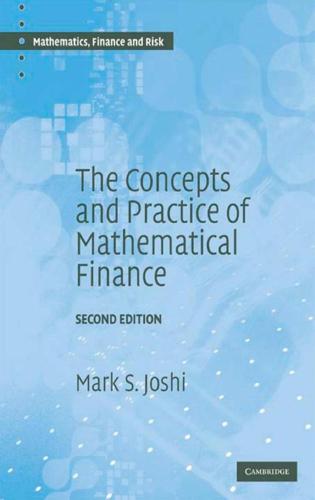
The Concepts and Practice of Mathematical Finance
by
Mark S. Joshi
Published 24 Dec 2003
When pricing an exotic option we should be careful to examine what features of the model it is particularly sensitive to. 18.8 Further reading Jim Gatheral's book, [58], is the best reference currently available on the dynamics of the volatility surface. Cont and Fonseca, [40], carried out a principal components analysis of the volatility surface for index options in S&P and FTSE. They have many interesting results including that relative movements of implied volatilities have little correlation with the underlying. Emanuel Derman carried out an analysis of how changes in spot related to changes in skew for the S&P 500 and identified differing regimes over time, [46]. Other papers applying the same methodologies in different contexts are [1] and [117]. See also [12], [83] and [84] for further discussion of how option price movements are affected by spot movements in the real world.
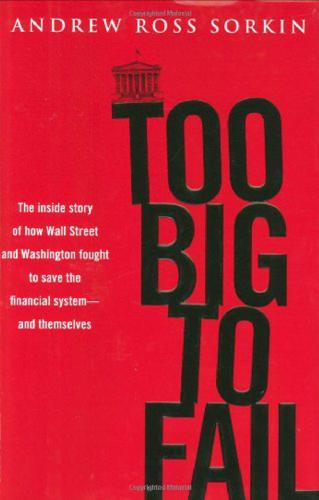
Too big to fail: the inside story of how Wall Street and Washington fought to save the financial system from crisis--and themselves
by
Andrew Ross Sorkin
Published 15 Oct 2009
Christine Harper, “Wall Street Bonuses Hit Record $39 Billion for 2007,” Bloomberg, January 17, 2008; Susanne Craig, Kate Kelly, and Deborah Solomon, “Goldman Sets Plan to Escape U.S. Grip,” Wall Street Journal, April 14, 2009. “The whole world is moving”: Louis Uchitelle, “The Richest of the Rich, Proud of a New Gilded Age,” New York Times, July 15, 2007. “ate their own cooking”: As Emanuel Derman, of hedge fund Prisma Capital Partners, noted: “These guys ate their own cooking; they didn’t just pass it on to clients.” Paul Barrett, “What Brought Down Wall Street?” BusinessWeek, September 19, 2008. “The sudden failure or abrupt withdrawal”: Charles A. Bowsher, comptroller general of the United States, said this on May 18, 1994, before the Senate Committee on Banking, Housing, and Urban Affairs. http://www.gao.gov/products/GGD-94–133.

The Meritocracy Trap: How America's Foundational Myth Feeds Inequality, Dismantles the Middle Class, and Devours the Elite
by
Daniel Markovits
Published 14 Sep 2019
Whalen, “Financialization and Economic Inequality,” Journal of Economic Issues 44, no. 3 (2010): 764–75. through the 1950s and 1960s: See David Kaiser, American Physics and the Cold War Bubble (Chicago: University of Chicago Press, in preparation). See more at http://web.mit.edu/dikaiser/www/CWB.html#CWBChapters. “science in the service of war”: Emanuel Derman, My Life as a Quant: Reflections on Physics and Finance (Hoboken, NJ: John Wiley & Sons, 2004), 4. Hereafter cited as Derman, My Life as a Quant. research dried up: Derman, My Life as a Quant, 4. found themselves without academic jobs: The number of physics PhDs produced by American universities, for example, surged in the 1950s and 1960s, peaked in 1970, and then collapsed, falling by over 40 percent by the early 1980s.